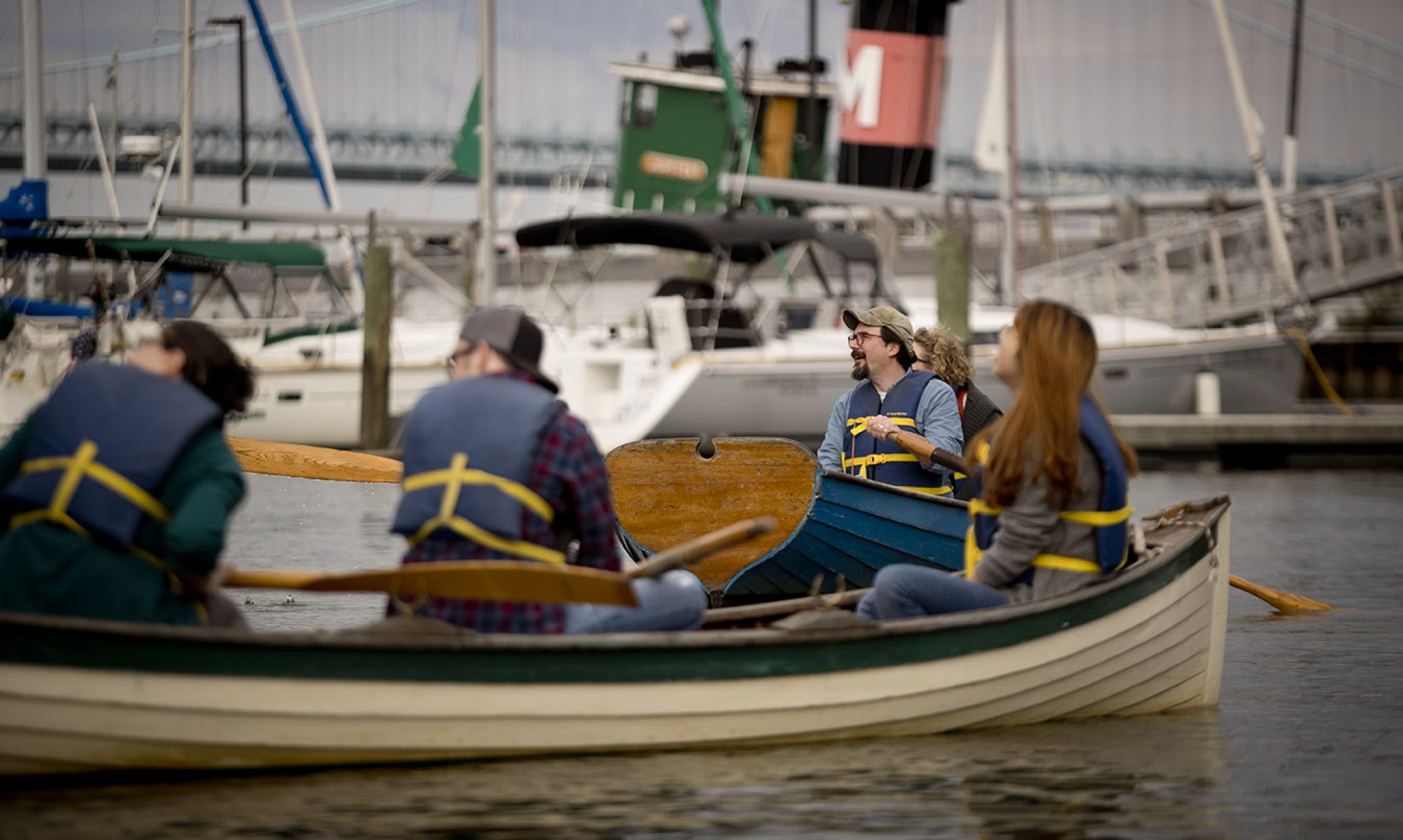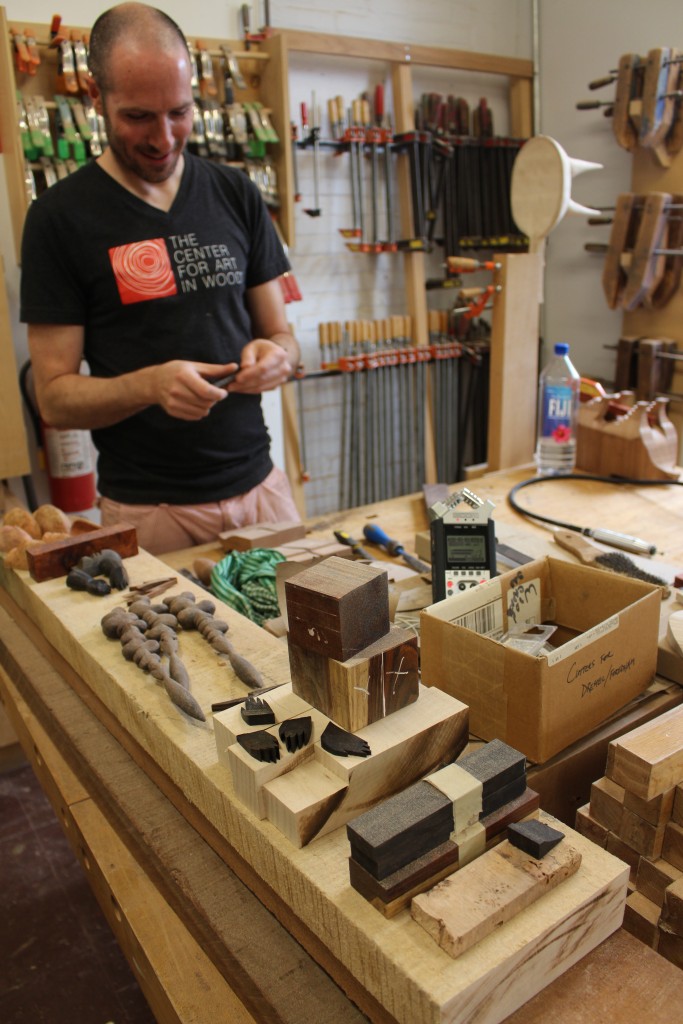 Perhaps none of this year’s ITE fellows are more at home in Philadelphia than Rex Kalehoff, who earned a BFA in sculpture from UArts before moving on to RIT’s MFA program in woodworking. As he tells it, Kalehoff’s work is inspired by long travels around the Pacific Rim and a consequent fascination with the power of wood art to connect us with deep pasts and diverse cultures. The prevalence in his work of animal forms and fanciful masks connotes global mythologies and the archetypal Trickster figure.
Perhaps none of this year’s ITE fellows are more at home in Philadelphia than Rex Kalehoff, who earned a BFA in sculpture from UArts before moving on to RIT’s MFA program in woodworking. As he tells it, Kalehoff’s work is inspired by long travels around the Pacific Rim and a consequent fascination with the power of wood art to connect us with deep pasts and diverse cultures. The prevalence in his work of animal forms and fanciful masks connotes global mythologies and the archetypal Trickster figure.
But Kalehoff draws too on more recent pasts in making sense of his creative vision. “[My] attention to aesthetics,” he explains, “comes from growing up on a boat.” Kalehoff spent much of his early years with his parents, one a musician the other an artist, aboard an elegant fifty-foot wooden sloop. When shoreside, Kalehoff savored his parent’s New York City recording studio, which he recalls being filled with “amazing instruments and amazing musicians.” Within his memory of these two spaces—wherein art, craft, and design coalesced in dazzling arrays of wood—Kalehoff sees the beginning of his artistic journey.
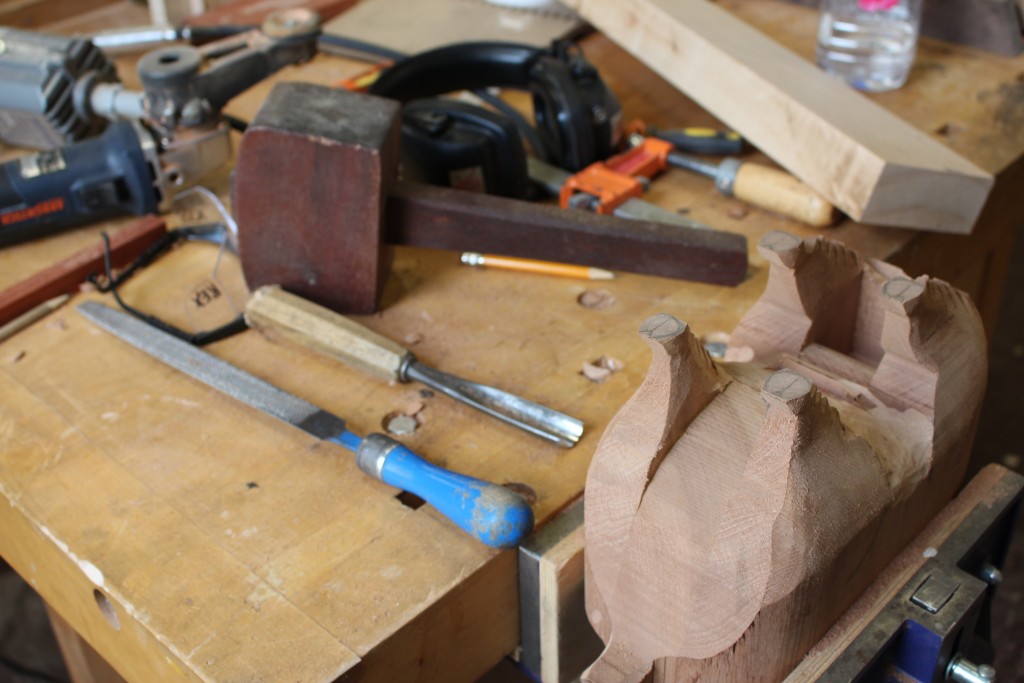
[Click here to hear Kalehoof discuss his artistic vision.]
The journey has not been without its challenges. Kalehoff recalls a long struggle to balance his love of form with a commitment to craft. “There were always those who were telling me … that [my work] wasn’t cutting edge enough, that it wasn’t conceptual.” And yet Kallehoff refused to shift his path, committing himself foremost to creating objects that are well-made and beautiful. Along the way he found inspiration in the work of others, including Ricky Swallow’s meticulously crafted trompe l’oeil wood sculptures, that demonstrated how concept and craft could successfully coexist.
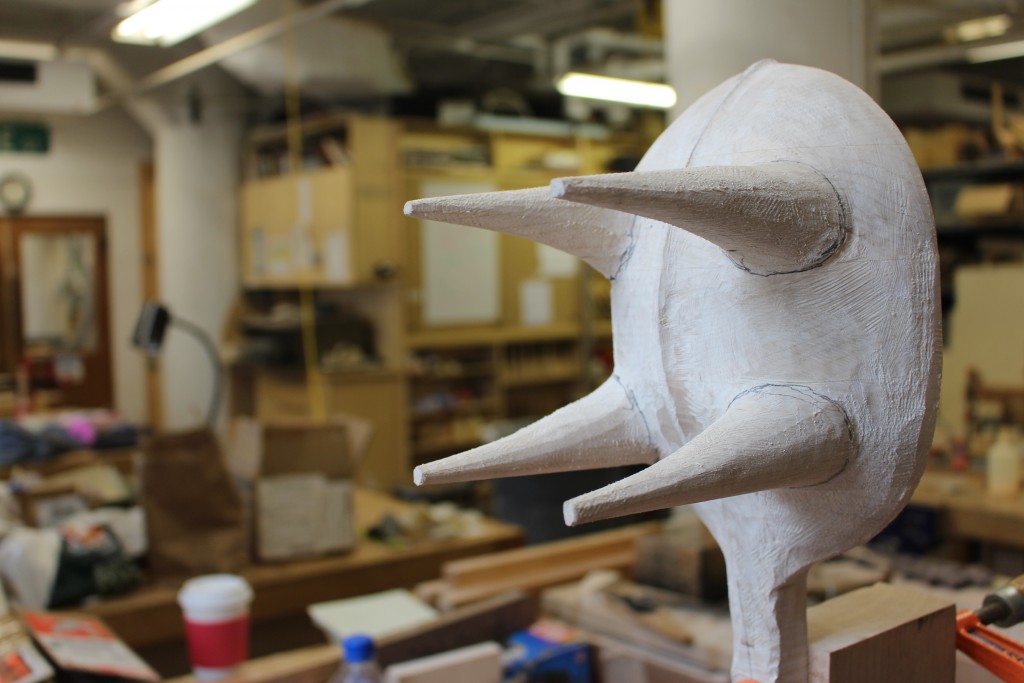
[Clear here to hear Kalehoff discuss awareness.]
If anything, Kalehoff has become even more mindful of method as he’s settled into teaching at Brooklyn’s Makeville Studio. “The teaching I do,” he explains, “is therapeutic because I’m teaching people about awareness … I slow them down.” As Kalehoff sees it, making students aware of shop safety, or even the importance of a square square, promotes self-awareness and a sense of calm. It also encourages innovation. It was just this kind of creative self-awareness that prompted Kalehoff to begin using his bandsaw as a sculpting tool. “I learned it from studying furniture…you can do multiple [small sculptures] the same way you do chair legs.” The proof: a buffet of figurines on Kalehoff’s bench, including six masks, fifteen fish, and as he puts it, “a bunch of hands.”
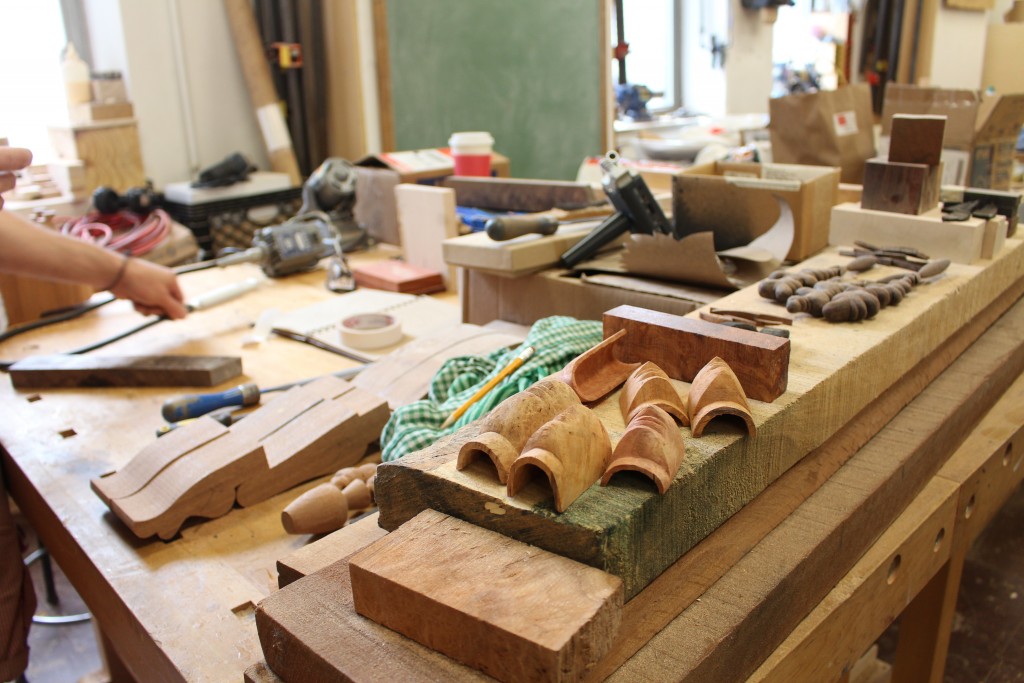
[Click here to hear Kalehoff discuss tools and technique.]
